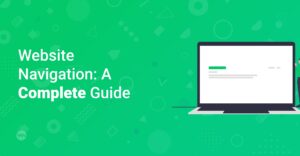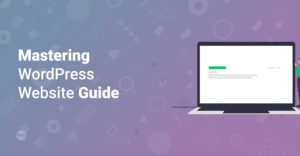Preface
Choosing the right website design is crucial for representing your brand effectively and engaging your target audience. Your website is often the first interaction potential customers have with your business, so it needs to make a positive and lasting impression. In this comprehensive guide, we’ll walk you through the key considerations and steps to help you select the best website design that aligns with your brand identity and resonates with your audience. Let’s dive in and ensure your website becomes a powerful tool for your business success!
Understanding Your Brand and Audience
Before you start thinking about layouts and color schemes, it’s essential to have a solid understanding of your brand and who you’re trying to reach. This foundational knowledge will guide your design choices and ensure your website effectively communicates your brand’s message.
Define Your Brand Identity
Your brand identity is more than just a logo; it’s the entire personality of your business. Consider these elements:
- Mission Statement: What is the core purpose of your business? What problems are you solving?
- Values: What principles guide your business decisions and actions?
- Personality: Is your brand fun and quirky, or serious and professional?
- Unique Selling Proposition (USP): What makes your business different from the competition?
Hint: Clearly defining these elements will help you create a website that accurately reflects your brand.
Know Your Target Audience
Understanding your audience is just as important as understanding your brand. Consider these factors:
- Demographics: Age, gender, location, income, education, etc.
- Psychographics: Interests, values, lifestyle, attitudes, etc.
- Needs and Pain Points: What problems are your customers trying to solve? What are their frustrations?
- Online Behavior: How do they use the internet? What websites do they visit? What devices do they use?
You can use tools like Google Analytics to gather data about your audience’s behavior on your current website (if you have one) or conduct surveys and interviews to get direct feedback.
Key Elements of Effective Website Design
Once you have a clear understanding of your brand and audience, you can start focusing on the visual and functional elements of your website design.
Visual Appeal
The visual design of your website plays a crucial role in grabbing attention and creating a positive first impression. Here are some key considerations:
- Color Palette: Choose colors that align with your brand personality and evoke the right emotions. Use a tool like Adobe Color https://color.adobe.com/explore to create a cohesive and visually appealing color scheme.
- Typography: Select fonts that are easy to read and consistent with your brand. Limit yourself to two or three fonts to maintain a clean and professional look. Check out this article about how to choose the right fonts for your website
- Imagery: Use high-quality images and videos that are relevant to your brand and audience. Avoid generic stock photos and opt for authentic visuals that showcase your products, services, or team. You can also make high-resolution screenshots and display the images in base64 format! Here you can learn how!
- Layout and Composition: Create a visually balanced layout that guides the user’s eye and highlights important information. Use white space effectively to avoid clutter and improve readability.
User Experience (UX)
User experience refers to how easy and enjoyable it is for visitors to use your website. A positive UX is essential for engaging visitors, encouraging them to explore your site, and ultimately converting them into customers. Here are some key aspects of UX design:
- Navigation: Make it easy for visitors to find what they’re looking for with a clear and intuitive navigation menu. Use descriptive labels and organize your content logically.
- Information Architecture: Plan the structure of your website carefully to ensure that information is easy to find and understand. Create a sitemap to visualize the hierarchy of your content.
- Mobile Responsiveness: Ensure that your website looks and functions flawlessly on all devices, including smartphones, tablets, and desktops. Use a responsive design framework or theme to adapt your layout to different screen sizes.
- Speed and Performance: Optimize your website for speed to minimize loading times and improve user engagement. Use a caching plugin, compress images, and choose a reliable hosting provider such as Bluehost, Dreamhost or Hostgator
- Accessibility: Design your website to be accessible to users with disabilities, following accessibility guidelines such as WCAG (Web Content Accessibility Guidelines) https://www.w3.org/WAI/standards-guidelines/wcag/.
Info: A well-designed website should be both visually appealing and user-friendly.
Choosing the Right Platform and Tools
Selecting the right platform and tools is crucial for building and managing your website effectively. Here are some popular options:
WordPress
WordPress is a powerful and versatile content management system (CMS) that powers millions of websites worldwide. It’s known for its flexibility, ease of use, and extensive library of themes and plugins. With WordPress, you can create virtually any type of website, from a simple blog to a complex e-commerce store. Here is a complete guide on how to make a free website with wordpress.
Pros:
- Highly customizable with thousands of themes and plugins.
- SEO-friendly.
- Large and active community for support and resources.
- Easy to learn and use.
Cons:
- Requires some technical knowledge to set up and maintain.
- Can be vulnerable to security threats if not properly secured.
- Plugin conflicts can sometimes occur.
Website Builders
Website builders like Elementor or Wix offer a drag-and-drop interface that makes it easy to create a website without any coding knowledge. They typically include hosting, themes, and other essential features.
Pros:
- Very easy to use, no coding required.
- All-in-one solution with hosting and other services included.
- Fast setup and deployment.
Cons:
- Less customizable than WordPress.
- Can be more expensive than WordPress in the long run.
- Limited control over your website’s code and data.
Hint: If you have little to no coding experience, a website builder might be a good option. If you want more flexibility and control, WordPress is a better choice.
Themes and Templates
Whether you choose WordPress or a website builder, you’ll need a theme or template to define the visual design of your website. There are thousands of free and premium themes available. Here are a few popular options like Astra Pro or from Themeforest:
- Astra: A lightweight and customizable WordPress theme that’s perfect for building fast and SEO-friendly websites. There are also multiple Astra starter templates available.
- Elementor: While primarily a page builder plugin, Elementor also offers a variety of pre-designed templates that you can use to create beautiful and functional websites. Check out also this article on getting started with Elementor
- ThemeForest: A marketplace with a vast selection of premium themes for WordPress and other platforms.
Info: Choose a theme or template that aligns with your brand and audience, and make sure it’s responsive and easy to customize. Consider using a page builder like Elementor to further customize your website’s design.
The Website Design Process: A Step-by-Step Guide
Now that you have a solid understanding of the key elements of website design, let’s walk through the process of choosing the right design for your brand and audience.
1. Define Your Goals
What do you want to achieve with your website? Do you want to generate leads, sell products, or simply provide information? Clearly defining your goals will help you make informed design decisions.
2. Research Your Competition
Take a look at your competitors’ websites and see what they’re doing well. What design elements do you like? What could they improve? This research will give you ideas and help you differentiate your website.
3. Create a Mood Board
A mood board is a collection of images, colors, fonts, and other design elements that represent the overall look and feel you want to achieve with your website. This can be a physical board or a digital one created using tools like Pinterest or Canva.
4. Develop a Wireframe
A wireframe is a basic layout of your website’s pages, showing the placement of content and navigation elements. This helps you plan the structure of your website and ensure that it’s user-friendly.
5. Choose a Theme or Template
Based on your research and mood board, select a theme or template that aligns with your brand and audience. Make sure it’s responsive, customizable, and easy to use.
6. Customize Your Design
Use a page builder like Elementor to customize your theme or template and create a unique design that reflects your brand. Pay attention to color, typography, imagery, and layout.
7. Test and Iterate
Once your website is live, test it thoroughly to ensure that it’s functioning properly and providing a positive user experience. Use analytics tools to track user behavior and identify areas for improvement. Continuously iterate on your design based on user feedback and data.
Info: Website design is an ongoing process. Be prepared to make changes and updates as your business evolves and your audience’s needs change.
Website Design Best Practices
To ensure a successful website design, keep these best practices in mind:
- Keep it Simple: Avoid clutter and focus on the essential elements.
- Prioritize Mobile: Design for mobile devices first, then adapt to larger screens.
- Use High-Quality Images: Invest in professional photography or use high-resolution stock photos.
- Optimize for SEO: Use relevant keywords in your content and meta descriptions, learn here more about SEO optimization
- Make it Easy to Contact You: Include a contact form or email address on every page.
- Include a Call to Action: Guide visitors towards a specific action, such as signing up for a newsletter or requesting a quote.
Conclusion
Selecting the best website design for your brand and audience is a critical step in establishing a successful online presence. By understanding your brand identity, knowing your target audience, and following the website design process outlined in this guide, you can create a website that not only looks great but also drives results for your business. Remember to prioritize user experience, choose the right platform and tools, and continuously test and iterate on your design. With dedication and attention to detail, your website will become a valuable asset for your brand.



